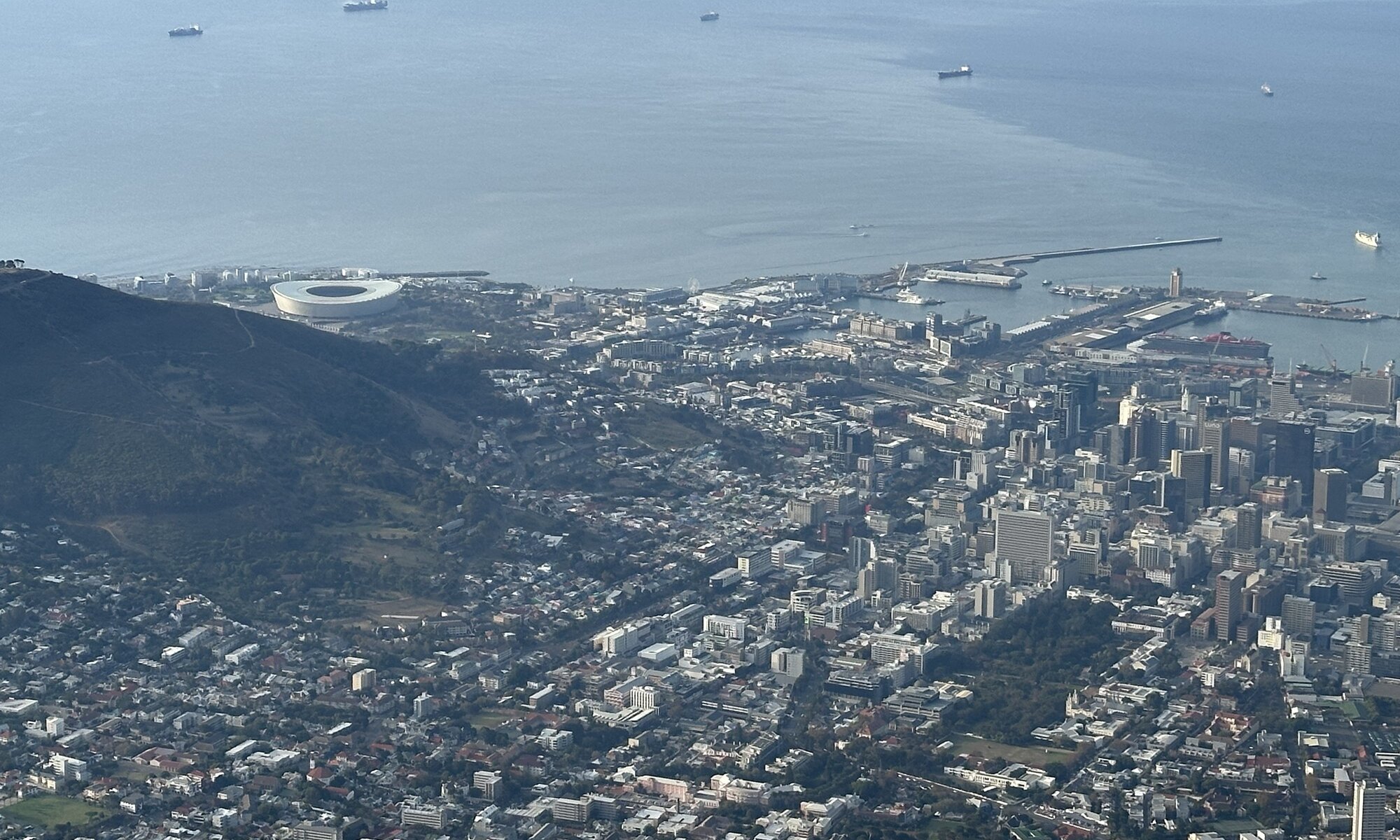South Africa is often called the Rainbow Nation to symbolize its diverse cultures, ethnic groups, and religions. The term was popularized by Archbishop Desmond Tutu after the end of apartheid in 1994, reflecting the country’s transition to a multiracial democracy under Nelson Mandela. The ‘rainbow‘ represents the many different people and traditions coexisting in the country, including Black, White, Colored, Indian, and various indigenous groups such as the Zulu, Xhosa, and Sotho. It also highlights South Africa’s eleven official languages and rich cultural heritage.
Apartheid is officially gone, but social inequality is still there. You can see that already in supermarkets where the one group goes to Spar, while Shoprite is predominantly frequented by another. And you cannot overlook the Townships, the poor areas around the cities; a different world. No wonder that not all parts of the country can be considered safe at all times. The biggest surprise to me was that locals didn’t at first recognize me as a foreigner or tourist, they’ve seen me as a member of the privileged part of the country: a white person with European roots.
Exploring South Africa was great because of many options to learn about the Rainbow Nation and its special history. Another star of course where the different national parks, private game reserves and wildlife sanctuaries that make discovering nature and seeing wild animals easy. I observed these: heron, jackal, kudu, mongoose, warthog, white-cheeked turaco, blue duiker, crane, baboon, hummingbird, kingfisher, grasshopper, frog, penguin, spider, meerket, rhea, emu, antelope, girafffe, rhinoceros, buffelo, rock hyrax (so cute!), ostrich, gnu, steenbok, bontebok, sea lion, elephant, and lion. On one road trip.
By the way: driving at South Africa is rather simple. Yes, you have to drive on the left, but the rest is close to what you’re used to. A specialty are crossings where all four directions have to stop and whoever reaches the stop line first is allowed to pass first. What is a bit unusual to me are the many people offering to wash your car or to ‘watch’ it while it is parked. A simple way to earn some cash for them. When it comes to electricity, load shedding was an often announced possibility, but never happened. The only thing I’ve seen everywhere are special lights that activate when electricity is gone.
My trip to South Africa began at Cape Town and its surroundings. I continued to Stellenbosch and the Cape Winelands before I passed a long distance to Oudtshoorn. From there I used the classic Garden Route via Wilderness and Plettenberg Bay to Storms River. My final stop was the Addo Elephant Park before returning home via Gqeberha (formerly Port Elizabeth), a town worlds afar from the attractions of Cape Town. Travelling through South Africa was an amazing experience and a good combination of nature, wildlife and history.
A short history of South Africa
The history of South Africa is marked by a complex interplay of indigenous cultures, colonialism, and the development of apartheid, a system of institutionalized racial segregation and discrimination that shaped the country for much of the 20th century. Before European colonization, the land was inhabited by various indigenous groups, including the Khoisan, Zulu, Xhosa, and Sotho peoples. In the 17th century, the Dutch established a settlement at the Cape of Good Hope, which was later taken over by the British. These colonial powers imposed discriminatory policies, with land dispossession and forced labor as common tactics to maintain control. By the 1940s, South Africa became a republic, and the National Party, which came to power in 1948, officially implemented apartheid laws that restricted the rights of the Black population, segregating them in all aspects of life, including education, healthcare, and housing.
Apartheid policies were designed to maintain white supremacy and exclude Black South Africans from full participation in political, social, and economic life. Laws such as the Group Areas Act (which enforced segregation in residential areas), the Pass Laws (which controlled the movement of Black South Africans), and the Bantu Education Act (which created inferior schooling for non-white children) further entrenched racial divisions. This system led to widespread protests and resistance movements, both within South Africa and internationally. One of the most notable figures in the fight against apartheid was Nelson Mandela, who spent 27 years in prison before his release in 1990. His leadership, alongside others like Desmond Tutu and Walter Sisulu, led to the eventual dismantling of apartheid. In 1994, South Africa held its first multiracial elections, and Mandela was elected president, marking the official end of apartheid and the beginning of a new era of democratic governance and reconciliation in the country.
South Africa
Loading map...


